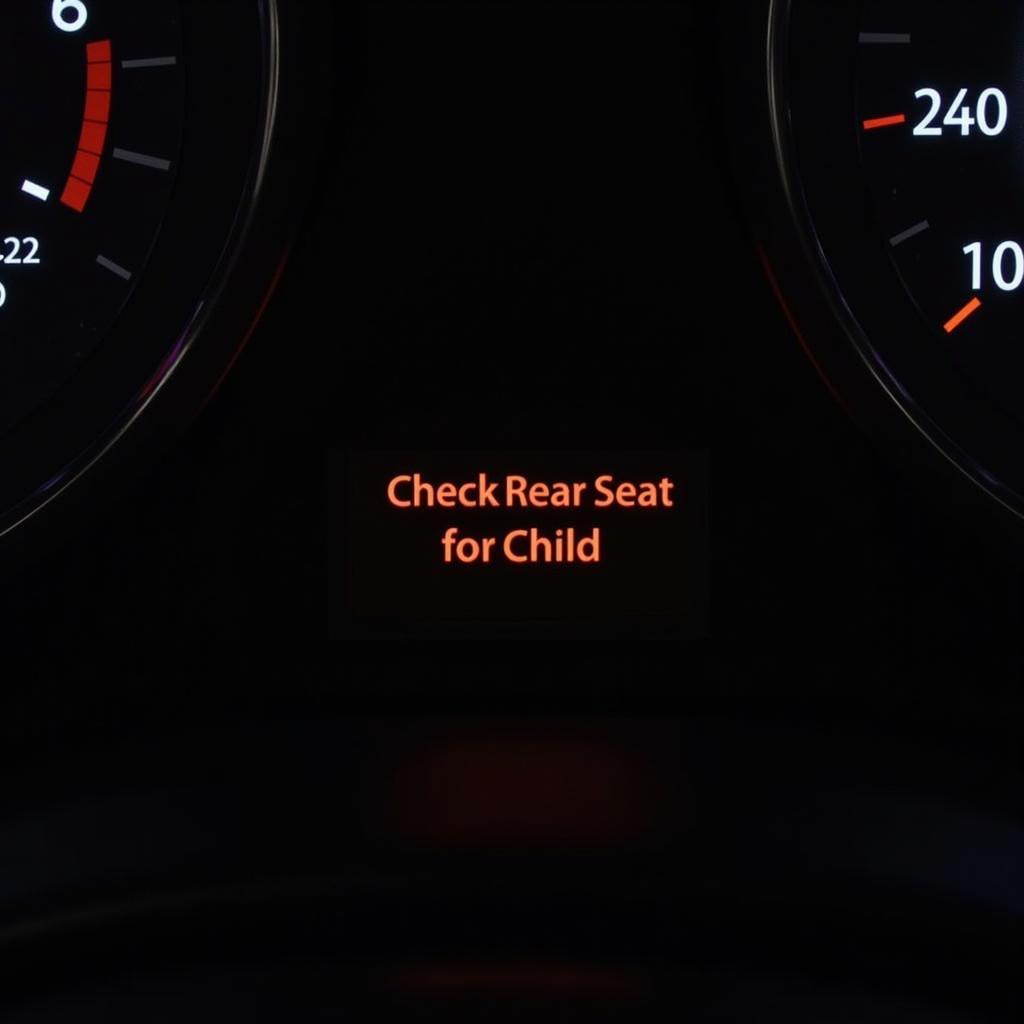The “Sensealite warning you have child in back seat” message can be startling, especially if you’re certain there’s no one in the backseat of your car. This safety feature, designed to prevent tragic hot car deaths, can sometimes malfunction or trigger false alarms. This article delves into the workings of this system, common reasons for false alarms, and troubleshooting steps you can take.
 Child Seat Sensor Dashboard
Child Seat Sensor Dashboard
How Does the Rear Seat Reminder Work?
Most rear seat reminder systems, often branded as “Sensealite” or similar names by different car manufacturers, rely on door sequencing logic. The system monitors the opening and closing of rear doors before and after a journey. If a rear door was opened and closed before the trip, and isn’t opened again after the engine is turned off, the system assumes a child may have been left behind and triggers an alert.
Why am I Getting a False Alarm?
While these systems are designed with safety in mind, several factors can lead to a “Sensealite warning you have child in back seat” even when there’s no child present:
- Sensor Sensitivity: Sometimes, the sensors might be overly sensitive, picking up on minor vibrations or weight shifts in the car and interpreting them as a child’s presence.
- Software Glitches: Like any software-driven system, occasional glitches can cause the rear seat reminder to malfunction.
- Electrical Issues: Faulty wiring or a weak car battery can disrupt the sensor’s functionality, leading to inaccurate readings.
Troubleshooting Steps for “Sensealite Warning You Have Child in Back Seat”
If you find yourself facing a persistent false alarm, here are some steps you can take:
- Check for Obvious Triggers: Before assuming a malfunction, ensure there are no objects like shopping bags, gym equipment, or even pets in the back seat that might be triggering the sensor.
- Open and Close Rear Doors: Try opening all rear doors fully and then closing them firmly. This can help reset the door sequencing logic.
- Restart the Engine: A simple engine restart can sometimes resolve temporary software glitches affecting the system.
- Check Your Owner’s Manual: Your car’s owner’s manual will contain specific information about your vehicle’s rear seat reminder system, including any customization options or troubleshooting tips.
 Car Owner's Manual Open to Rear Seat Reminder Section
Car Owner's Manual Open to Rear Seat Reminder Section
- Consult a Mechanic: If the issue persists despite trying these steps, it’s best to consult a qualified mechanic, preferably one specializing in your car’s make and model. They can diagnose the problem accurately and perform any necessary repairs or software updates.
“Remember,” says John Smith, a seasoned automotive electrician with over 15 years of experience, “while these systems are incredibly valuable safety features, they’re not foolproof. Always physically check your backseat before walking away from your car, especially in hot weather.”
Can I Disable the Rear Seat Reminder?
While the option to disable the system might be tempting, especially if you’re experiencing frequent false alarms, it’s generally not recommended. Disabling this safety feature increases the risk of accidentally leaving a child unattended in the car, which can have devastating consequences.
 Mechanic Inspecting Car Sensor
Mechanic Inspecting Car Sensor
The Importance of Vigilance
Even with advanced safety features like rear seat reminders, nothing can replace the importance of vigilance. Always double-check your backseat before locking your car, regardless of whether the reminder system is activated or not. These systems are designed as a safety net, not a substitute for responsible parenting.
By understanding how the “Sensealite warning you have child in back seat” system works, recognizing potential causes for false alarms, and taking appropriate troubleshooting steps, you can ensure the system functions effectively and provides that extra layer of protection for your precious cargo.
